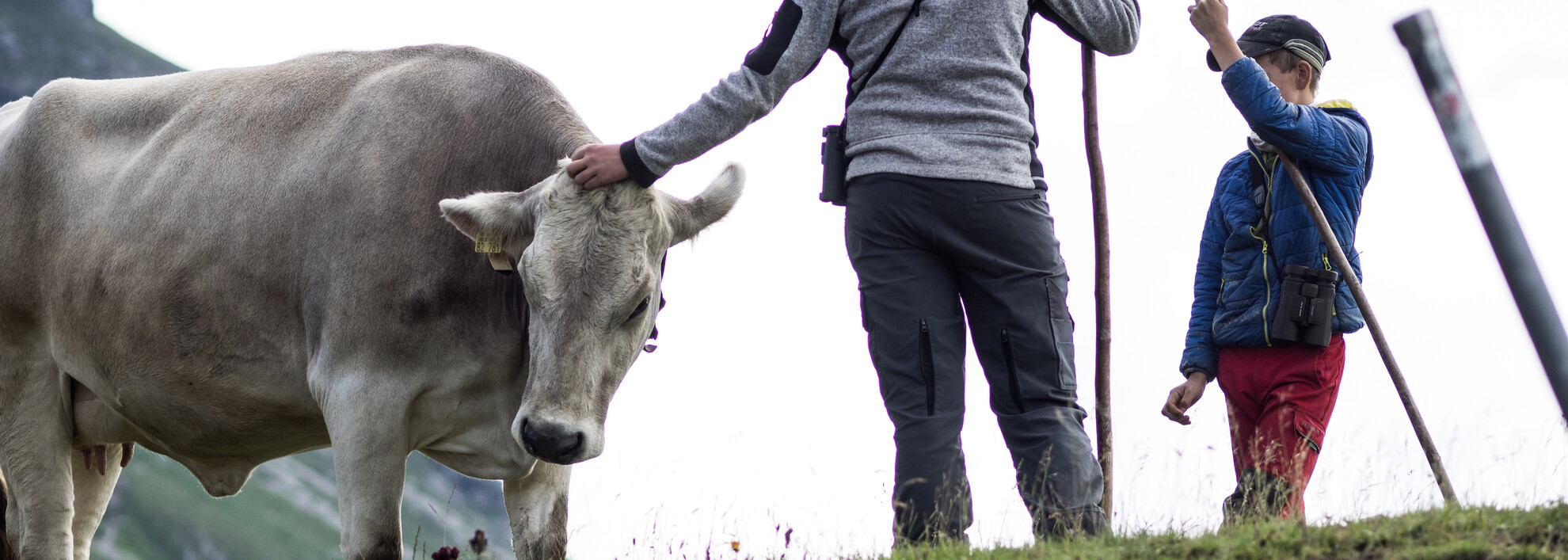
Two half-pint herders and their summer on the Alpe Bärgunt
Titus Moosbrugger (11) and Magnus Huber (12) are off up the Alpe Bärgunt again. The reason? To keep watch over Kleinwalsertal’s largest herd of 280 livestock.
Last summer, most city children went wild for Pokémon-Go and spent their days hunting virtual monsters. In the Walser mountains, however, a handful of children and young people spent their summer holidays working as herders. It’s Titus’ fourth summer as a halfpint herdsman, and Magnus’ third. Nüüs accompanied the two of them over the summer to find out why they are so passionate about life in the Alps, and so ready to give up their home comforts for the simplicity of life in the mountains.
The sound of the bells hurries the first herd forward, and the young shepherds get into position, equipped with their sticks. One herd after another reaches the pastures below the Bärgunthütte. There’s a touch of unrest in the air: the animals have to get used to being part of a large herd with many new faces, and some are not yet accustomed to eating fresh grass. But the herders also look slightly tense. They don’t yet know their protegés and their peculiarities, with the result that Titus nearly falls into a stream as he heads off a runaway.
Alpine farming has been the most important supply source for the Walser since they settled in Kleinwalsertal in the 13th century. Ancient chronicles speak of the mountains as “the farmers’ bread basket”. As tourism began to increase in the 1950s, Alpine farming was replaced as the most important economic driver and provider of employment. Many Alpine farms were disbanded, partly because it was increasingly
difficult to find young people willing to take on the hard work in the mountains. In 1945, there were still 50 farms in Kleinwalsertal; today this number is down to 35. The livestock population has also changed considerably, and the number of dairy cows has declined significantly. For Wolfgang, however, there was never an alternative. For him, being outdoors all year round, living in tune with nature, and looking after the animals entrusted to him is pure happiness. And he is all the more delighted that a new generation of cattle herders is growing up in the shape of Magnus and Titus, as well as members of his own family.
The fitness of the cattle herders also improves continuously. As long as the animals are on the meadows of the Mittelalpe, they have to get up at 6.00 am every morning and climb their way up from the Bärgunthütte to the cattle. That’s quite a climb in one day. Rain or shine, they spend the whole day with the herd. They make sure that no animals are lost or injured, check the fences, or lend a
hand when shrubs, small trees, or other plants have to be removed from the Alpine meadows to ensure their safety and useability.
Within a very short time, they leave the steep ascent behind them, and seem to disappear into the expanse of the high mountains. Gradually, the cattle herd also begins to move. Of their own accord, the first animals begin to move briskly forwards. The group follows, and they make pretty quick progress. The summer storm isn’t holding back either: a never-ending downpour is accompanied by thunder and lightning.
Titus is on the way with one of the first groups. But his hope of reaching the hut on the Hochalp and drying off disappears relatively quickly when he discovers that one of the pasture fences has given way, and that the animals are continuing towards the Widdersteinhütte. Before he can get warm and dry in the hut, the missing animals must be rounded up and the fence fixed.
They seem to enjoy the simplicity of life, based on the rhythm of the animals and nature - without television, Internet, or mobile phones. Warm showers depend on the solar panels, so sometimes there’s no hot water when you’re looking forward to it the most, for example after a rainy day out on the pastures. There have also been summers where the solar panels and the toilet have both given up the ghost entirely, and ingenious alternatives had to be found.
While Magnus and Titus help in the barn and clean the milking equipment, Simon lovingly tends a lame animal resting in front of the hut, while Martin goes out on the first round. At regular intervals, the herders set out to count the livestock and look for any evidence of suspicious activity. Over time, they learn what to look out for, becoming more independent every day. They take responsibility for the tasks entrusted to them, make their own decisions, and know that the head herder is relying on them. Wolfgang feels a real sense of propriety for all the animals in his care, and bringing them back down into the valley in good health is a matter close to his heart.
Weather permitting, they can also enjoy a quick dip in the Hochalpsee between rounds. It has to be a really hot summer though. Instead, in mid-August there is a short cold snap, a volatile situation for both the cattle and their herders. The snow soon melts again, but while it lasts the steep slopes can become dangerous slippery for the animals. It is at moment like this that the young herders benefit from Wolfgang's
decades of experience. Cattle-driving, especially under such adverse conditions, has to be learnt, and the herders also need a good dose of intuition when choosing which path to take, and where to position themselves to drive the animals safely from one place to another. The cut-off date for the move back to the lower camp is August 24, St. Bartholomew’s Day, so on the penultimate Sunday in August, the entire team of helpers will once again meet up to drive the animals back to the Mittelalpe.
It goes without saying that Magnus and Titus are also coming to the last major event of the Alpine summer, and will help to exchange the animals’ grazing clamps to the melodious sound of the clamp bells. The clamps belong to the herders and farmers. More than anything they are of sentimental value to their owners, but depending on their size and workmanship they can be worth up to 600 euros. Over the summer, the young herders have got to know each of the animals, and can now tell them apart by their outward appearance and individual characters.
As all the animals are driven safely back down into the valley, the cattle procession is led by one elaborately decorated cow known as the “Kranzrind”. Because the Alpe Bärgunt herd runs to well over 200 animals, there are two Kranzrinde. It’s not just the cattle that are decked out for this special day, however; the herders also don their Sunday best to bid farewell to a successful Alpine summer after the last strenuous trek from Baad to Riezlern. As a thank you for their efforts, the young herders from the Alpe Bärgunt are given some pocket money and their own clamp, which is elaborately engraved with their name and the number of summers they have spent on the pasture. A valuable reminder of a summer that has given them countless experiences and memories, and that will probably accompany them throughout their lives.
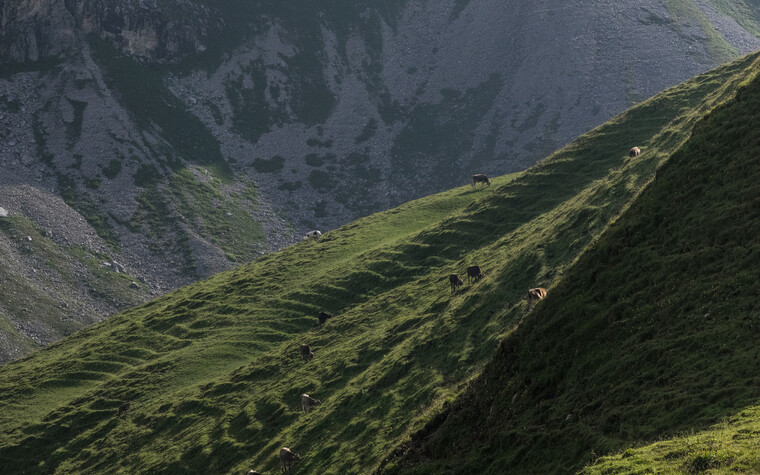
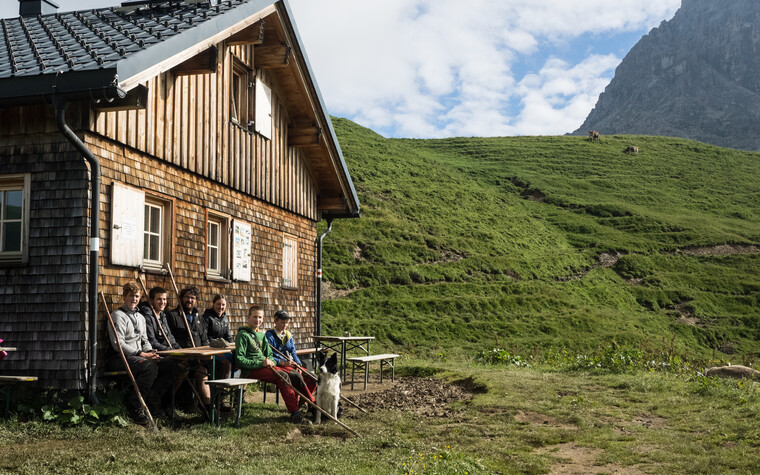
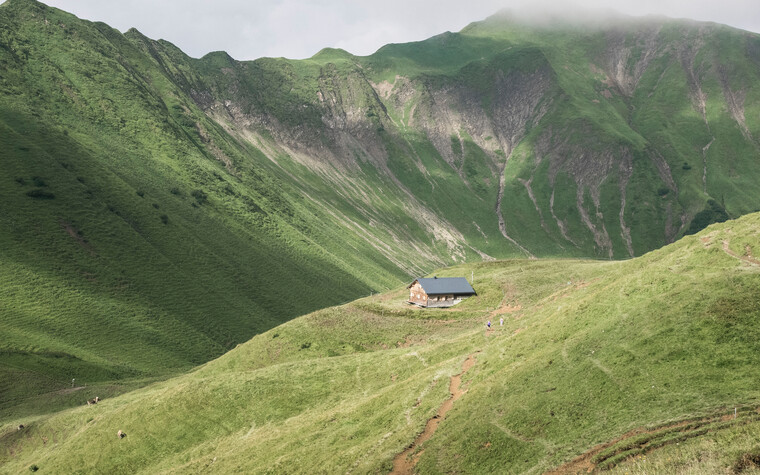
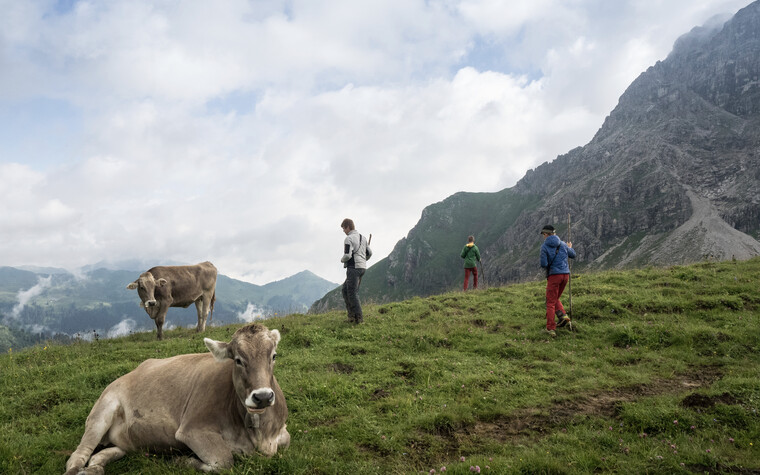
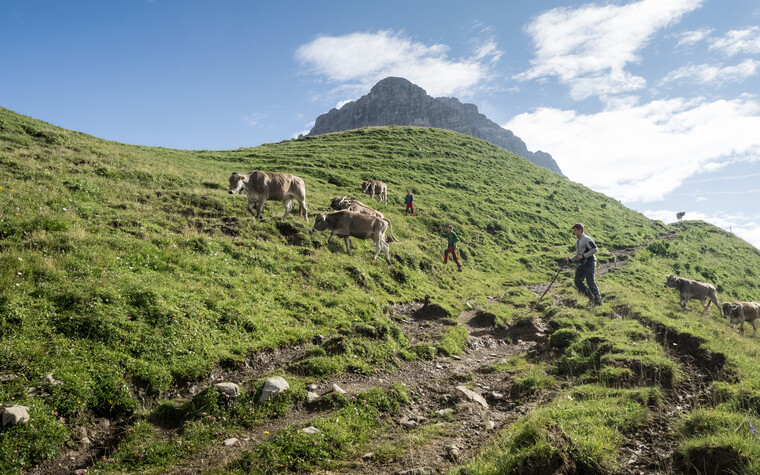
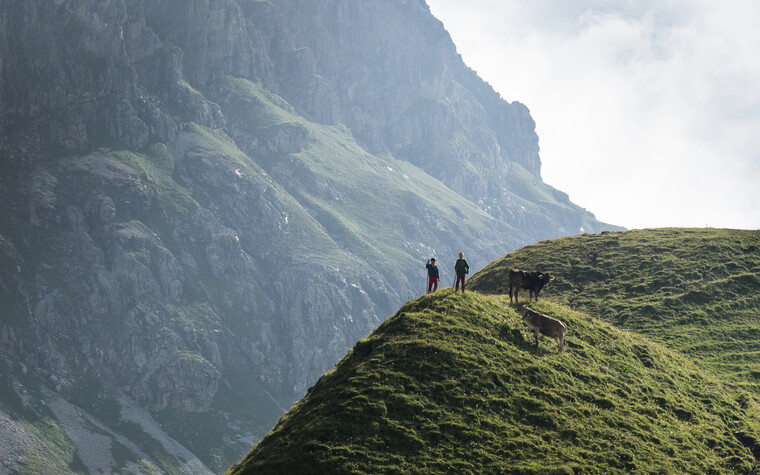
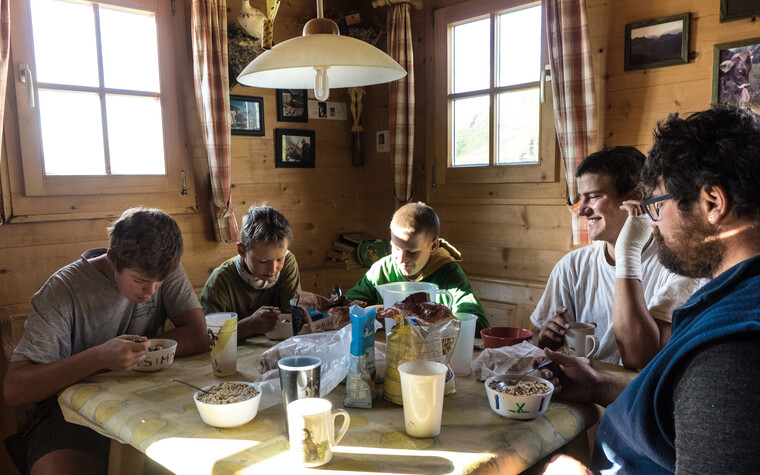
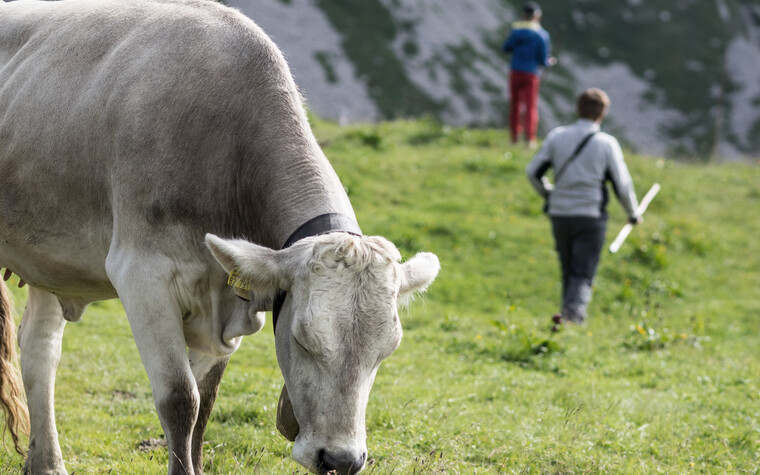
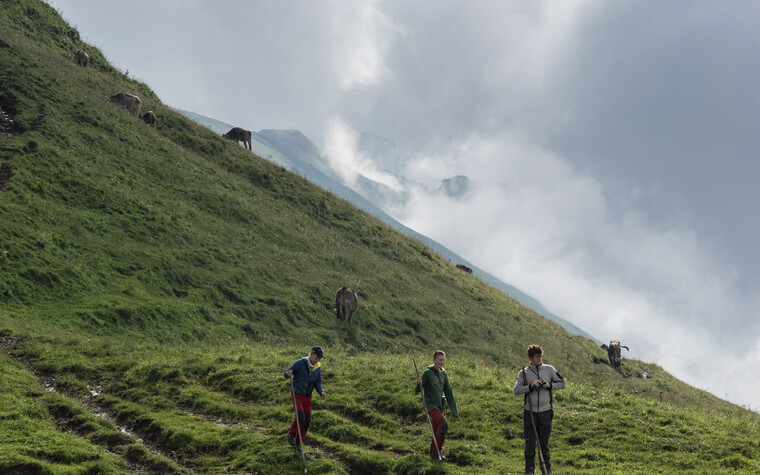
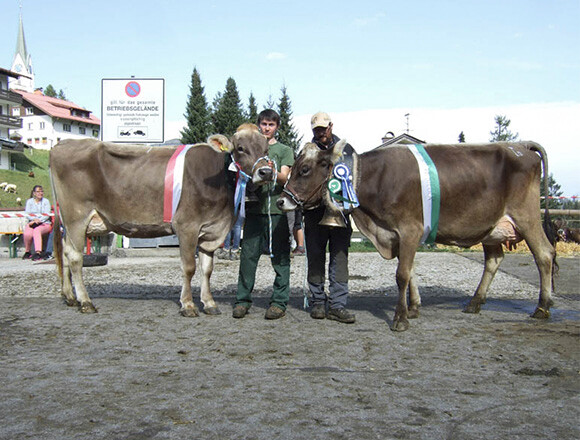

Share page...
...and tell others